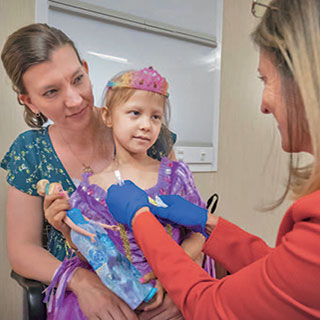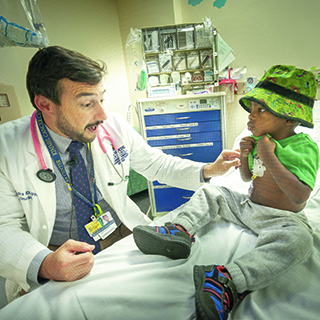Pediatric radiation oncologist Matthew Ladra is experimenting with protons, nanoparticles and organoids to deliver promising new therapies to pediatric patients.
One study uses nanoparticles—ultra-tiny structures that can transport a cargo of drugs and other cancer-fighting treatments to tumors—to reset cells’ natural cancer fighting DNA. Ladra says that many pediatric cancers are missing a key tumor suppressing gene, called p53, and the nanoparticles transport the gene to cancer cells to put it back into action.
“We use proton therapy to stun the tumor and open it up so we can infuse radiolabeled p53 genes,” he says. The gene is already present in normal cells, so it only goes to work in tumor cells. The radiolabel allows the scientists to see and track the gene inside cancer cells to confirm that it turns on and helps shrink the tumor.
Ladra also plans to collaborate with drug discovery experts and other scientists to study drug/proton combinations. In pediatric brain tumor research, he is excited about a new model of discovery. Tiny organized spheres of human neural and nerve cells about the size of a fly’s eye, called organoids or minibrains, are providing an innovative way to research treatments of pediatric brain cancers. Researchers are using them to replicate how pediatric brain cancers naturally grow and spread and to study more closely how these cancers respond to radiation and drug treatment. In a precision medicine approach, a minibrain could be created as a stand-in for a patient by implanting it with cells from the patient’s brain cancer.


